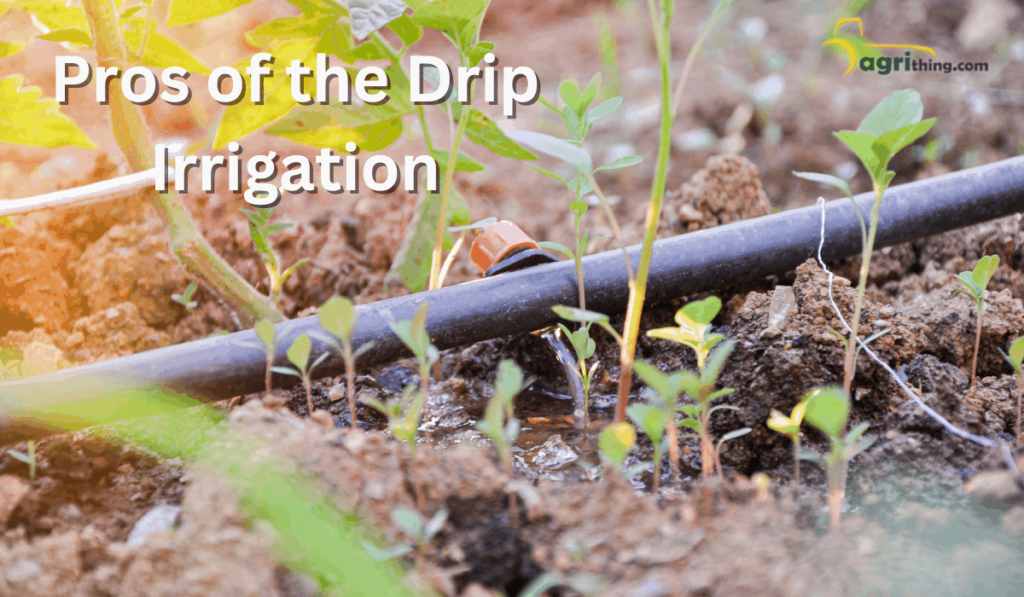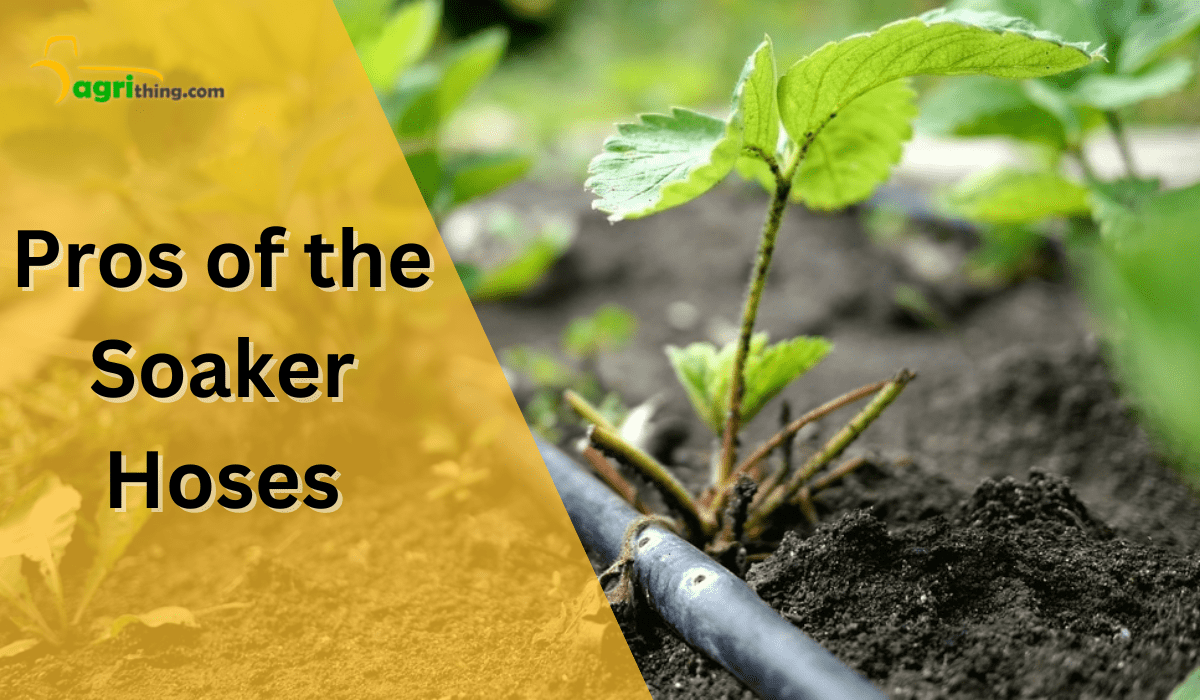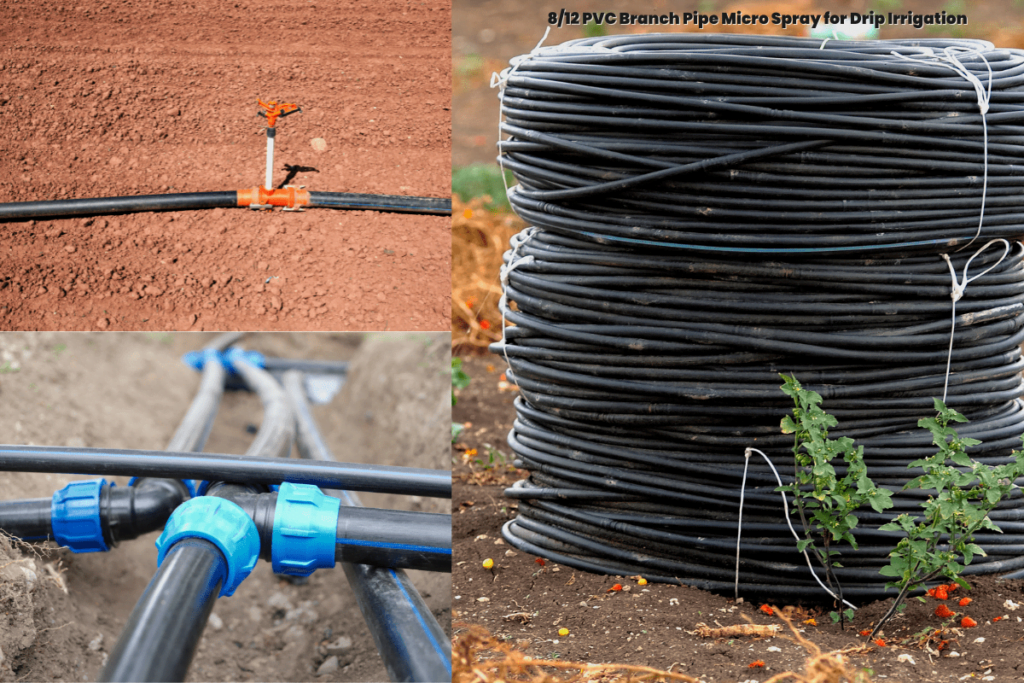Power Up with Soaker Hoses: Effortless Watering

When it comes to watering your garden or landscape, there are two popular options: drip irrigation and soaker hoses. Each method has pros and cons, and choosing the right one can significantly impact your plants’ health. This article will discuss the advantages and disadvantages of drip irrigation and soaker hoses, including their features, benefits, and limitations. By understanding the differences between these options, you can make an informed decision and improve your watering practices.
Table of Contents
Understanding Drip Irrigation
Drip irrigation is a method of watering plants. It supplies water directly to their roots through tubes or pipes. It slowly and steadily applies water. Thus, it allows water to soak into the soil and reach the plants’ root systems. Micro irrigation systems include emitters, tubing, valves, and a controller. These components control the flow and timing of water distribution.
Using Water Efficiently
Drip irrigation is highly efficient when it comes to water usage. It delivers water directly to the plants’ roots. This targeted approach ensures that plants get the right amount of water while reducing water waste.
Precise Nutrient Delivery
Micro irrigation systems are also excellent at delivering nutrients directly to the plants’ roots. By adding fertilizers or other additives to the irrigation system, you can optimize nutrient uptake and improve the overall health of your plants.
Reduced Weed Growth
Since trickle irrigation delivers water only to the plants’ root areas, it limits the moisture available to weeds. Thus, it reduces weed growth and herbicides. It makes maintenance easier and more environmentally friendly.
Suitable for Sloped or Uneven Landscape
Trickle irrigation systems work well in gardens with slopes or uneven ground. The flexible tubing allows you to navigate obstacles and deliver water precisely where needed, regardless of the terrain. This adaptability ensures uniform watering and promotes healthy plant growth throughout the field.
Limitation of Drip irrigation System:
The limitations of drip irrigation are:
Clogging:
Drip emitters can get blocked by dirt, debris, or minerals in the water. This reduces the water flow and makes it uneven.
High initial cost:
Setting up a micro irrigation system can be costly because you need special equipment like emitters, filters, and pressure regulators.
Maintenance needs:
Drip systems need regular checking and care to work correctly. This includes looking for blockages, adjusting water flow, and replacing worn-out parts.
Limited water coverage:
Micro irrigation works best for plants with whole roots. It may not be suitable for crops with wide-spreading roots or notable areas that need more water.
Easy to damage:
Drip lines above the ground can be damaged by machines, animals, or people. This causes leaks and makes the system less effective.
Water quality concerns:
Trickle irrigation is sensitive to water quality issues like saltiness or chemicals. Poor water quality can cause blockages and harm plants.
Energy requirements:
Drip systems often need electricity to power pumps or filters, which increases costs.
Less flexible:
Drop systems are designed for specific setups and may need to quickly adapt to crop types, spacing, or field layout changes.
Dependence on water source:
Micro irrigation relies on a steady and good water supply. In places with little water or inconsistent availability, this can be a big problem.
Skill and knowledge needed:
Installing, operating, and maintaining a trickle irrigation system requires specific skills and knowledge that only some can access.
Pros and Cons of the Drip Irrigation


| Pros | Cons |
|---|---|
| Efficient water usage | Initial installation costs can be high |
| Reduces water evaporation and runoff | Requires regular care and monitoring |
| Suitable for both small and large areas | Requires expertise for proper installation |
| Promotes healthier plant growth | Requires precise planning and design |
| Minimizes weed growth | Clogging issues may occur in the system |
Understanding Soaker Hoses
Soaker hoses are special hoses that allow water to slowly seep out along their entire length. They are made of a material that lets water pass through gently and evenly. Soaker hoses are usually placed on the ground near the base of plants or slightly buried in the soil.
Cost-Effectiveness
One great thing about soaker hoses is that they are affordable. They are not expensive like other irrigation systems, so they are a good choice for gardeners on a budget. They are also easy to install and require minimal maintenance.
Versatility
Soaker hoses are versatile and work well with different garden layouts and plant types. You can easily customize them to fit different shapes and sizes of gardens, even if the plants are spaced irregularly. Soaker hoses are perfect for long, straight garden beds or rows of plants.
Deep Root Watering
Soaker hoses release water slowly, which helps water reach deep into the roots of plants. This encourages plants to develop deep root systems, making them stronger and drought-resistant. Soaker hoses are perfect for plants that already have deep roots.
Limited Control over Water Distribution
One downside of soaker hoses is that you can’t control exactly where the water goes. They provide even moisture along their length, but adjusting the amount of water for individual plants or sections is hard. This can be a problem if you have plants with specific watering needs.
Pros and Cons of the Soaker Hoses


| Pros | Cons |
|---|---|
| Easy to install and maintain | Requires proper water pressure and flow |
| Provides deep, targeted watering | May require frequent monitoring |
| Promotes water conservation | Not suitable for all types of plants |
| Reduces water runoff and evaporation | Can be prone to clogging or uneven watering |
| Cost-effective watering solution | Limited control over water distribution |
Drip Irrigation vs. Soaker Hoses: A Comparison
| Criteria | Drip Irrigation | Soaker Hoses |
|---|---|---|
| Water Efficiency | Delivers water directly to plant roots, minimizing wastage. | Provides slow, steady water release directly to the soil surface. |
| Customization | Allows precise control over water volume and distribution. | Less customizable, with water spread evenly along the hose. |
| Plant Compatibility | Ideal for individual plants, especially in garden beds. | Suitable for garden beds, vegetable rows, and densely planted areas. |
| Installation Complexity | Requires initial setup involving tubing, emitters, and valves. | It is simple to install to lay the hose and connect it to a water source. |
| Pressure Sensitivity | Works well under low pressure, making it suitable for slopes. | Requires moderate pressure for optimal water release. |
| Weed Control | Limits water to targeted plants, reducing weed growth. | May water surrounding soil, increasing the potential for weeds. |
| Cost | Initial setup costs are higher due to components and system design. | More affordable with minimal equipment required. |
| Maintenance | Requires periodic checks for clogging and emitter adjustments. | It may experience clogging but is easier to identify and clean. |
| Scalability | Easily expandable with additional tubing and emitters. | Limited expansion options due to fixed hose length. |
Factors to Consider when Choosing
Consider these factors when choosing between drip irrigation and soaker hoses:
- How your garden is laid out and its terrain.
- The types of plants you have and how much water they need.
- Your budget and how much you can afford.
- How much control do you want over where the water goes?
- The time and effort you have for setting up and maintaining the system.
By thinking about these things, you can make an intelligent choice and pick the watering system that works best for you.
Which is Better?
Deciding between drip irrigation and soaker hoses depends on your situation and what you like. Each system has its own benefits and drawbacks. Drip irrigation works well for gardens with different plants that need specific amounts of water. Soaker hoses are great if you want a cheaper option and have a simple garden with established plants.
Ultimately, the best choice depends on factors like the size and layout of your garden, the types of plants you have, your budget, and how you want to control and maintain the water.
Tips for Successful Drip Irrigation
To make drip irrigation work well, follow these tips:
- Check the emitters often to see if they’re blocked. Clean them if needed.
- Keep an eye on the water pressure to make sure the system works its best.
- Put mulch around your plants. It keeps the moisture in and stops it from evaporating.
- Get a timer or controller. It helps automate when the watering happens.
- Look at the system regularly for leaks or damaged tubes. Fix or replace them as necessary.
Tips for Using Soaker Hoses Effectively
To use soaker hoses effectively, follow these tips:
- Place the hoses close to the plants’ base to deliver water efficiently.
- Arrange the hoses to fit the shape and size of your garden.
- Use timers or check regularly to avoid giving too much or too little water.
- Inspect the hoses often for any damage and replace them if needed.
- You can bury the hoses slightly beneath the soil to decrease evaporation.
Environmental Impact
Both drip irrigation and soaker hoses help save water and prevent waste compared to traditional sprinklers. They deliver water directly to the plant roots, using water efficiently and reducing runoff. Targeted watering also reduces the need for weed-killing chemicals, making them better for the environment.
Cost Considerations
Soaker hoses are generally cheaper than drip irrigation systems. They don’t require a significant investment for buying or setting up, so they’re a good choice for gardeners on a budget. Micro irrigation may cost more initially, but it gives you precise control over water usage. It can save money in the long run by reducing water consumption and the need for weed control.
| Item | Drip Irrigation | Soaker Hoses |
|---|---|---|
| Initial Cost | PKR 5,000 – 10,000 | PKR 2,000 – 5,000 |
| Installation Cost | PKR 2,000 – 5,000 | PKR 500 – 1,500 |
| Maintenance Cost | PKR 1,000 – 2,000/year | PKR 500 – 1,000/year |
| Water Efficiency | High | Medium |
| Lifespan | 10-15 years | 4-7 years |
| Coverage Area | Large | Medium |
| Customization | Highly customizable | Limited customization |
| Overall Cost Effectiveness | High | Medium |
Conclusion
In summary, drip irrigation and soaker hoses have advantages and disadvantages for watering your garden or field. Micro irrigation saves water, provides proper nutrient delivery, and reduces weed growth. However, it can become clogged, has higher initial costs, and requires maintenance. Soaker hoses are cheap, easy to set up, and water plants deeply. However, they need more precise water control and can also become blocked.
When deciding between the two, consider factors such as your garden or field layout, types of plants, budget, desired water control, and available time for maintenance. Trickle irrigation suits gardens with different plant needs, while soaker hoses are better for simple gardens with selected plants.
Both methods save water and are more efficient than using sprinklers. Soaker hoses are more budget-friendly, while micro irrigation saves water and helps control weed growth.
Ultimately, the choice depends on your specific circumstances. Consider the factors mentioned to make an informed decision and maintain a healthy garden or field.
Get your 8/12 PVC Branch Pipe Micro Spray for Drip Irrigation, Garden Irrigation, and more at Agricomplex. Don’t wait, shop now!

Want to purchase accessories about Drip Irrigation or Soaker Hoses? Visit our Agricomplex website. Easy and helpful information just for you!
Frequently Asked Questions (FAQ’s)
Can I use drip irrigation and soaker hoses in my garden?
Yes, you can use both methods in your garden if you have different types of plants with different watering needs. You can provide optimal water distribution by strategically placing micro irrigation and soaker hoses.
Which watering method is best for potted plants?
Drip irrigation is often the most useful method for potted plants because it delivers water directly to the roots. Thus, prevents excessive moisture on the plant’s leaves and reduces the risk of diseases.
Are drip irrigation systems suitable for large-scale agricultural operations?
Micro irrigation can be scaled up for large-scale agricultural operations. However, careful planning, design, and maintenance are essential to ensure efficient water distribution and cost-effectiveness.
Can soaker hoses be used on hilly terrains?
Soaker hoses are generally not recommended for hilly landscapes as water may collect in lower areas. Thus, resulting in uneven watering. Drip irrigation is a more suitable option for sloped or uneven landscapes.
How long should I run my drip irrigation or soaker hose system?
The watering duration depends on various factors, including the specific needs of your plants, the type of soil, and the weather conditions. Observing the soil moisture and adjusting the watering schedule to avoid overwatering or underwatering.
Related Articles
People Also Asked
What are some tips for using soaker hoses effectively?
Use soaker hoses well, close them to your plants, arrange them to fit your garden, use timers or check regularly for proper watering, and look for damage.
What is the environmental impact of drip irrigation and soaker hoses?
Both drip irrigation and soaker hoses help save water, reduce runoff, and avoid using too many chemicals. This makes them suitable for the environment.
What are the cost considerations for drip irrigation and soaker hoses?
Soaker hoses are usually cheaper than drip irrigation, but micro irrigation gives you more control over water usage. This can save you money in the long term.
What is the lifespan and coverage area of drip irrigation and soaker hoses?
Drip irrigation systems typically last 10-15 years and cover a large area, while soaker hoses last 4-7 years and cover a medium-sized area.
What is the overall cost effectiveness of drip irrigation and soaker hoses?
Drip irrigation is highly cost-effective, while soaker hoses have moderate cost effectiveness.

Leave your comment